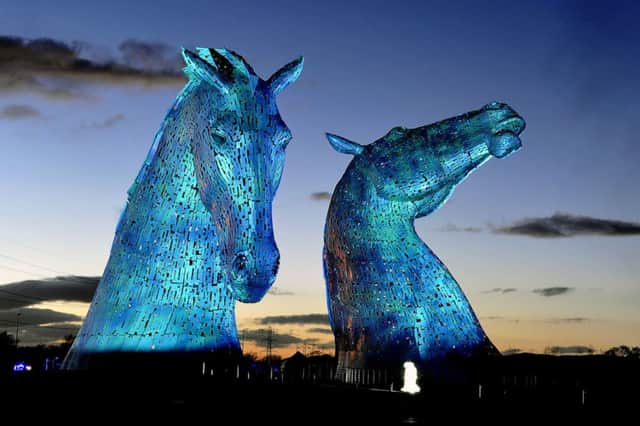Kelpies to close for repairs due to rust


Scotland’s largest public artwork opened to the public in April last year and has been treated with an anti-corrosive substance to withstand the cold Scottish winters.
However, it has now been found that the 300-ton horses’ lower section is rusting in the damp ground beside the Forth and Clyde Canal at Falkirk.
Advertisement
Hide AdAdvertisement
Hide AdThe towering Kelpies stand some 98ft above the ground with a further 52ft comprised of a support structure below the surface. Much resembling a horse, the artwork is set into the ground by way of four metal legs.
It had been thought that the earth around the subterranean section would keep rust at bay; however, water from the nearby canal is now seeping into the structure and its innovative foundation feature.
Work on the attraction is expected to cost more than £2 million and will require the closure of the popular attraction for up to a year.
Large-scale excavation works will be carried out as engineers dig down to the artwork’s crumbling foundations.
Project manager and structural engineer John Doe said: “It’s a shame really because they have become such an iconic attraction. We had believed that the lower section, or legs and body as we refer to them, would be fine beneath the ground but acoustic testing has alerted us to the fact that the artwork is now rusting from the hooves up.
“The remedial work will involve removing many tonnes of earth to get down to the foundation bases below the fetlocks and shanks or mid supports. Once at hoof-level, we will administer a layer of rust-proofing, moving up along the body over the flanks and shoulder to ground level.
“Once completed, the plan is to fill the soil back in and leave the Kelpies to settle once again.”
It is understood that site owners were first alerted to the degenerative condition afflicting the artwork’s lower section by a US tourist, Flora Pilo, who had noticed through timelapse video how the artworks’ muzzles had lowered over time as they sank into the boggy ground.
Advertisement
Hide AdAdvertisement
Hide AdSpeaking from her home in San Andreas, the 59-year-old told how she was on a guided bus tour of Scotland when she filmed a ten-minute video of the famous artwork last November.
She said: “We stopped at the Kelpies for a look around and we were all amazed at how dramatic they looked.
“I decided to shoot a timelapse video of the sun passing overhead and on first glance it looked quite impressive.
“However, later when we were back on the bus, I had another look and you could clearly see the muzzle of each horse slowly lowering towards the ground like they were bending to eat some grass or take a drink of water.
“Everyone on the bus was stunned so I immediately sent the video to Scottish Canals and was left speechless when they got back and told me they had investigated the matter and found them to be rusting from the hoof up.”
The horsehead sculptures were created by artist Andy Scott at a cost of £5m and are located in Helix Park, Falkirk, close to the M9 motorway.
It is estimated that 350,000 visitors flock to the area each year, bringing £1.5m of extra tourism revenue.
Glasgow artist Scott took inspiration from Scotland’s history of working horses which once pulled barges along the nearby Forth and Clyde Canal and the wider role of horses in the country’s industrial past.
FOLLOW US
SCOTSMAN TABLET AND MOBILE APPS